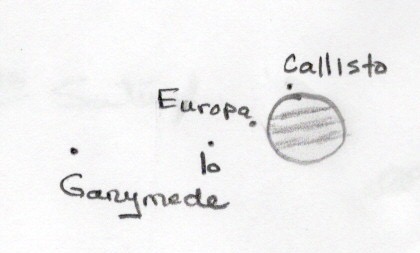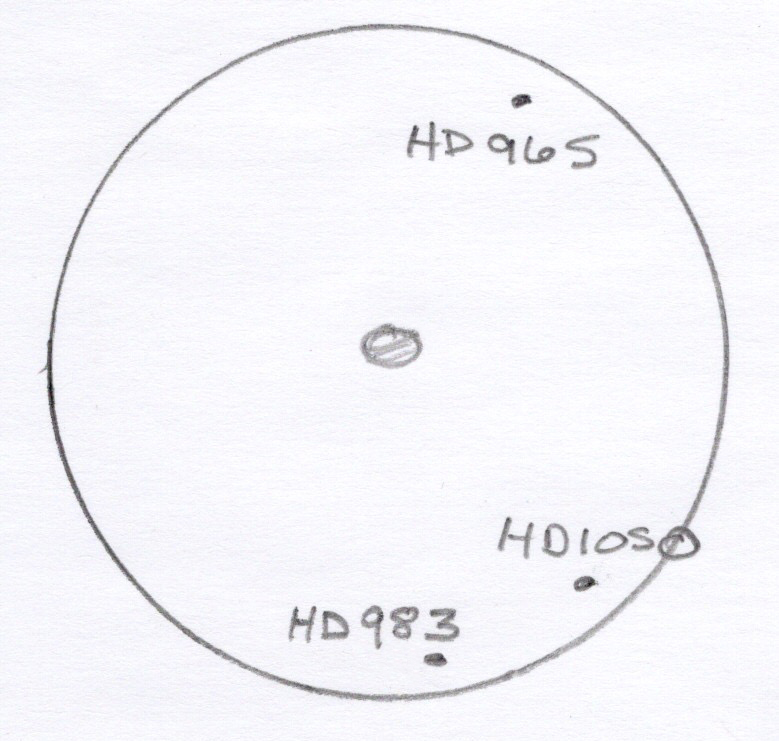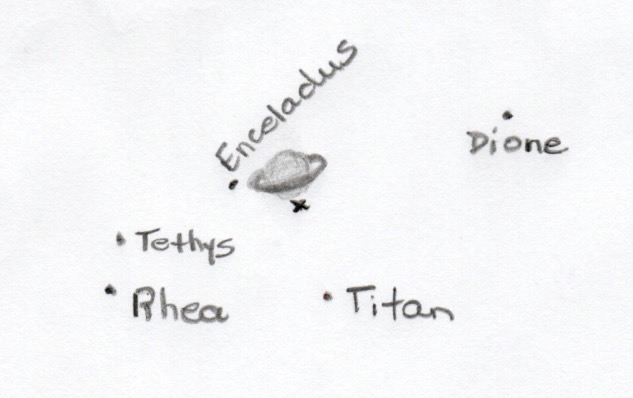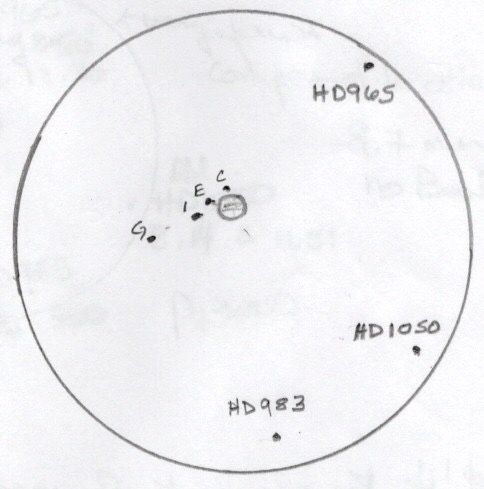Stars: Mirach
HD Stars: 965 (double), 983, 1050 (double)
Messier Objects: M13, M31
Planets: Jupiter (+ 4 Galilean Moons), Saturn (Enceladus, Tethys, Dione, Rhea, Titan)
Identified, not Observed & Not entered into Logbook or database: Pisces
Location: Home
Date: 2022-09-29
Time: 10:00 PM - 11:58 PM ADT
Equipment: Visual, Evostar 80ED, x2 Barlow, x3 Barlow
Eyepiece: Tele Vue 40mm Plössl, Antares 15mm, 2" Explore Scientific 12mm with 92° FOV, Meade Super Plössl 9.7mm
Temperature: 11° C - 10° C
SQM: 19.51 - 19.54
Transparency: not recorded
Seeing: not recorded
Jupiter (in Pisces) (4 observations)
I decided to try different eyepieces and my two Barlows to see what the difference was in the view and in focusing.
Observation 1:
Time: 10:16 PM
Equipment: Evostar 80ED
Eyepiece: Antares 15mm
Magnification: x40
Jupiter and all 4 of its moons were visible. Callisto appeared closest in alignment to the planet and was located at approximately 11 o'clock.
|
Observation 2: |
 |
Observation 3:
Time: 10:35 PM
Equipment: Evostar 80ED + x3 Barlow
Eyepiece: Antares 15mm
Magnification: x120
This was difficult to focus. With the narrower FOV, only 3 of its closest moons were visible. The bands seemed slightly titled towards the horizon.
 |
Observation 4:
|
 |
Saturn |
M31 / Andromeda Galaxy
Time: 11:17 PM
S&T Chart Reference: 3, 72
Equipment: Evostar 80ED
Eyepiece: 40mm, 25mm, 15mm with x2 Barlow
Magnification: x15, x24, x80
I attempted to use the go-to to get to Andromeda but that didn't work so well. Consequently, I went to Mirach instead then slewed upwards - found! The 25mm eyepiece gave the galaxy a bit more form, i.e., you could discern the bright/dense core and its elliptical shape. When I used the 15mm with x2 Barlow, the galaxy became a larger grey fuzzy and the elliptical shape could not be seen.
 |
Jupiter & Double Stars in Pisces |
M13
Time: 11:40 PM
Equipment: Evostar 80ED
Eyepiece: 2" 12mm with 92° FOV, 9.7
Magnification: x50, x62
I decided to have a quick view of M13 with two of the eyepieces. NOTE: unfortunately, my observing notes did not provide explanations as to how it looked.